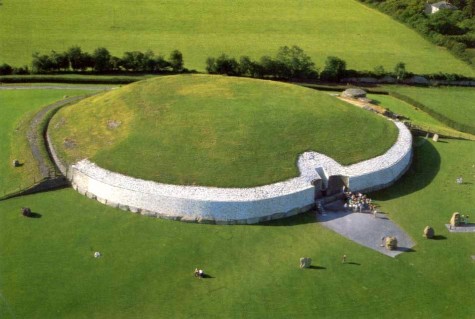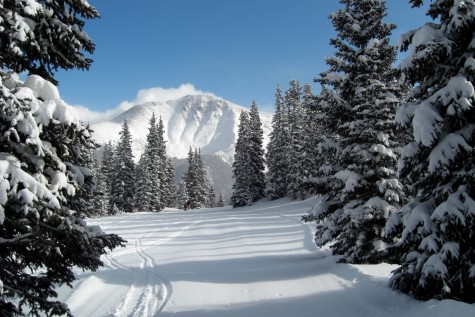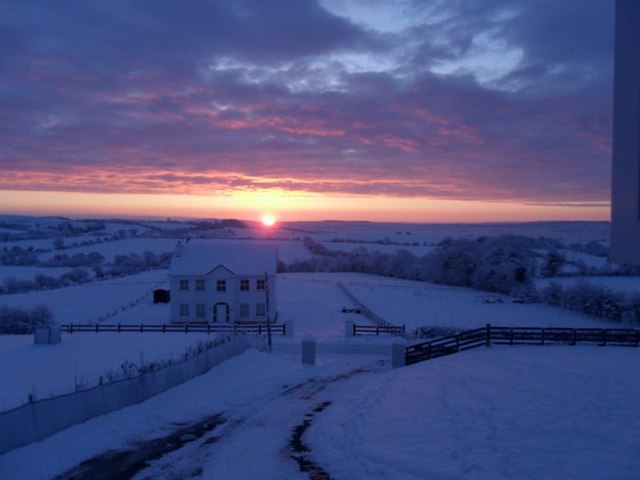Straight to the Solstice
As the “darkest day of the year” approaches, the facts and myths behind the intriguing winter solstice are astounding. As we approach this phenomenon on the 22nd of this month, it’s interesting to look under the basic meaning and definition of a time of the year that has rich historical and cultural significance. Though it appears to be solely scientific, there is, in fact, much more to the story.
At its base, the winter solstice is usually defined as the shortest day of the year, with the longest night. What’s interesting is that as each year passes, the length of this day actually increases slightly around 15 to 25 millionths of a second. Though not noticeable, this change does have a significant impact over time. Perplexing people as early as ancient times, there is much wonder, recognition, and celebration surrounding this day.
Proof of the study of solstices by early humans is marked by locations like the County Meath Newgrange tomb in Ireland as well as Stonehenge in England. Both of these historical monuments were constructed in consideration of the sun’s habits. They were built so that light would shine a certain way on its surface over the course of a few days of the year. More specifically, the positioning of the sun during the winter solstice is significant for Newgrange, while the positioning of the sun during the summer solstice is significant for Stonehenge. Today, many people visit the two locations during each respective time of the year, to experience the events and to feel a transcendental connection to the past.

It is speculated that each monument may have served as an ancient burial ground, a ceremonial religious center, or perhaps also a form of a solar calendar which would have been used to mark the passage of years (Newgrange) or to track the sun’s movement and the changing of seasons (Stonehenge). For both sites, it is difficult to discern how ancient people were able to create such astronomically accurate and strong structures at such an early time period. Built about 5,000 years ago, Newgrange is formed as a tomb that is underneath a large grass-covered mound with a small “window” in the ceiling which lets in illuminating sunlight strongly during 6 days of the year around the winter solstice. Also built about 5,000 years ago, Stonehenge was constructed so its entrance faces the rising sun on the day of the summer solstice. Although they are both shrouded in mystery, it’s obvious that the significance of these monuments and the solstices have played an important role in the lives of many for thousands of years.
As a popular term for the winter solstice, the origins of Yule date back to ancient days. Though the start of celebrations, festivals, and rituals for the solstice are unclear, the origin of the word “yule” can be found in the earlier history of language as being close to jól or hjól, meaning the wheel or cycle of life. According to the language of early Norse pagans, this definition is fitting, as Yule once was considered the start of a new year to some ancient civilizations like Greece and early inhabitants of Northern Europe. Therefore, the concept of Yule was perhaps considered earlier than when the word actually came into existence.
The origins of Yule are tied closely with the origins of Christmas. As one of the first official celebrations of a winter festival, Saturnalia in Rome influenced later celebrations of Yule and acted as a feast that celebrated the Roman God Saturn, who represented individual rebirth and spiritual growth. Because the Roman calendar was off by a few days, the solstice usually occurred on the 25th of December rather than the 21st or 22nd. A few have suggested that this celebration of “rebirth” is the initial link to the celebration of the birth of Christ on Christmas. It makes sense that additionally, the rebirth of the sun and the birth of Christ should be celebrated on the same day, according to an early historical source.
Similarly, the Norse in Scandinavia also celebrated the winter solstice to recognize the return of the sun. Many forms of literature mention a Yule feast in December very early on. In history, the Norse’s beliefs are the origins for the beliefs of Celtic pagans. By also honoring the cycle of nature, Yule is celebrated in modern times by many pagans from December 21st to January 1st. These days of celebration are the origin of the 12 days of Christmas. Overall, the connections between the celebration of Christmas and the celebration of the winter solstice are undeniable, but there are also many other factors that have led to the start of this widespread holiday besides an early Christian interest (though often negative) in the religious traditions of early pagans.

Though the winter solstice officially marks the start of winter, I realize that Colorado “winters” do appear to start in November or early December with the time of heavy snow. Despite the already snowy weather, in celebration of this new beginning, I asked a few people what their favorite part of the winter season is. Here is what they had to say:
“It’s not summer.” -Emma Wood
“It’s as cold as my heart. Also, snow days.” -Sebastian Lloret
“I love being forced to wear warm clothes, drink hot cocoa, and sit by the fireplace. If there is a fireplace in a room and it’s snowy outside, you have to sit by it. It’s pretty much a law.” -Tali Valentine
“I love how it brings people together, and people show more love to others and are willing to give.” -Samantha Stallworth
“The flavored drinks at Starbucks.” -Jessica Cox
“Fuzzy socks and beanies.” -Whitney Moran
“Having an excuse to stay inside and watch movies all day, also SNOWDAYS.” -Audrey Levens
“Cuddle season.” -Jake Thornally
“Fuzzy socks and snow days and sledding and hot cocoa and my birthday.” -Natasha Clarke
“Sweater weather, lattes, snow days, winter break.” -Tori Johnson
“Super Bowl.” -Nate Renfrew
“Running through snowbanks.” -Katie Rainsberger
“Wearing footie pajamas all winter break long.” -Lilliana Hamilton
“I like sleeping during the snow days!” -Sophie Braker
“I love how you can see your family, having two weeks of vacation, cuddling by the fire and the joy of Christmas songs on the radio & not dealing with teacher’s opinion on your late homework. Just the joy and spirit of the holidays.” -Anna Rose
“Holiday cooking and the challenge of finals.” -Jenny Beth Maynard
Varying from sweet to “cold,” nostalgic to funny, these responses prove that winter can mean different things to different people. No matter what it means to you, I hope that you find something to like about this chilly, but cozy season (snow days may already be a given). Have a fantastic rest of December and remember that it’s important to understand the historical, scientific, and spiritual depth of the origins of winter celebrations in order to fully appreciate the holiday traditions we hold today.
Citations:
Coldwell, Will. “Where to Experience the Winter Solstice: Ireland’s Prehistoric Newgrange Tomb.” Theguardian.com. The Guardian News and Media, 20 Dec. 2013. Web. 3 Dec. 2015.History.com Staff. “Why Was Stonehenge Built?” History.com. A & E Networks, 10 Apr. 2013. Web. 3 Dec. 2015.
D.M. Murdock/Acharya S. “When Was the First Christmas?” Truth Be Known. Stellar House Publishing, n.d. Web. 3 Dec. 2015.
Hanks, Micah. “Earth’s Longest Night: Myth and Mystery of the Winter Solstice.” Mysterious Universe. 8th Kind Pty Ltd, 23 Dec. 2014. Web. 3 Dec. 2015.
Lady SpringWolf. “History Of Yule.” The Pagan’s Path. Spring Wolf, n.d. Web. 3 Dec. 2015.

Hi, I'm Emily! I am a senior who enjoys writing, reading, watching Netflix, listening to music, and hanging out with friends. I also enjoy singing, playing...




Audrey Griffin • Dec 16, 2015 at 8:41 pm
This was very interesting. I enjoyed the historical background as well as the interviews with individuals as to why they like winter. Great Job!
Tali Valentine • Dec 16, 2015 at 10:03 am
Awh I love this! Great job going in depth on the season. Loved all of the perspectives!
Jenny Beth Maynard • Dec 16, 2015 at 10:01 am
Good job Emily! I love all of the interviews 🙂